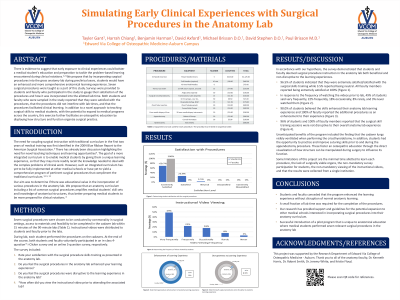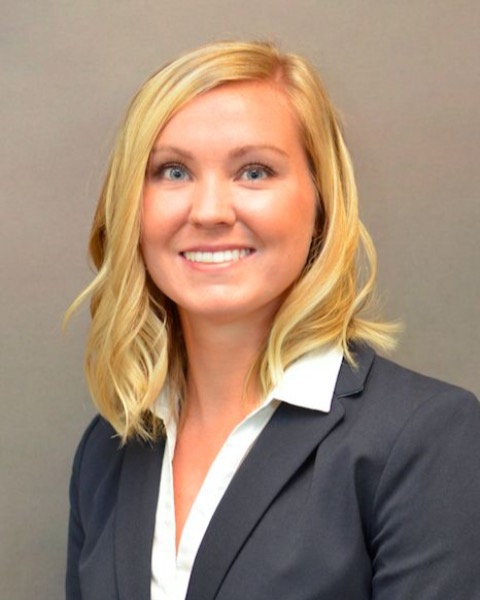General Surgery
Simulating Early Clinical Experiences with Surgical Procedures in the Anatomy Lab

Has Audio
Introduction/Purpose: There is evidence to suggest that early exposure to clinical experiences could bolster a medical student’s education and preparation to tackle the problem-based learning encountered during clinical rotations1,2. We hypothesized that incorporating common surgical procedures into the gross anatomy lab during preclinical years, students would have an enhanced anatomical learning experience. The incorporation of these procedures would not be disruptive to the normal conduct of the anatomy lab, nor result in exorbitant costs or extraordinary faculty skills.
Methods or Case Description: Seven common surgical procedures, including intraosseous needle insertion, venous cut down, chest tube insertion, surgical cricothyroidotomy, core needle liver biopsy, appendectomy, and hysterectomy, were taught as a part of this study. Video instructions on each of the surgical procedures were provided before each corresponding lab. Surveys were provided to study participants to measure their satisfaction of the procedures and how it was incorporated into the allotted lab time.
Outcomes: Both students and faculty who were sampled in the study reported that they were satisfied with the procedures (96.5% and 100%, respectively), that the procedures did not interfere with lab times (96% and 100%), and that the procedures facilitated clinical learning (98% and 100%).
Conclusion: This study demonstrates that providing a novel surgical teaching program to medical students is beneficial to their education and non-disruptive to the conventional anatomy curriculum. This exercise further facilitates an osteopathic education by displaying how structure and function organize surgical practice.
Methods or Case Description: Seven common surgical procedures, including intraosseous needle insertion, venous cut down, chest tube insertion, surgical cricothyroidotomy, core needle liver biopsy, appendectomy, and hysterectomy, were taught as a part of this study. Video instructions on each of the surgical procedures were provided before each corresponding lab. Surveys were provided to study participants to measure their satisfaction of the procedures and how it was incorporated into the allotted lab time.
Outcomes: Both students and faculty who were sampled in the study reported that they were satisfied with the procedures (96.5% and 100%, respectively), that the procedures did not interfere with lab times (96% and 100%), and that the procedures facilitated clinical learning (98% and 100%).
Conclusion: This study demonstrates that providing a novel surgical teaching program to medical students is beneficial to their education and non-disruptive to the conventional anatomy curriculum. This exercise further facilitates an osteopathic education by displaying how structure and function organize surgical practice.

Tayler Gant
Student
VCOM-Auburn
Phenix City, AL, US- HC
Harrah Chiang
VCOM-Auburn
Phenix City, AL, US
